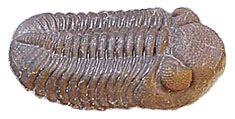By George E. Beetham Jr.
Adventures on Earth column for December 8, 2010, edition of The Review
A cliff in eastern France looms over a rural valley. Sand dunes in southern Virginia lie within a loop of the Nottaway River.
Though geologically different, the two sites may be linked together to tell the story of the first inhabitants of North America.
The Rock of Solutre is a limestone mesa whose flanks are covered with vineyards. The rock dominates the region where artifacts of people who lived between 22,000 and 17,000 years ago were found.
These people subsisted on reindeer in a time when the last glaciation extended southward into France.
They left artifacts in caves in the region – stone and bone tools that had a distinctive kind of flaking. Also in the caves were drawings of animals of their world.
Named the Solutreans for the site where these artifacts were first found, these people lived in a wide area of southern France and Spain.
Cactus Hill is a tree-covered, 75-foot dune inside a loop of the Nottaway River. It is the location of an archeological site where two cultures have been found.
The most shallow was the Clovis culture. A deeper level contains artifacts from people who lived earlier than the Clovis – some15,000 to 18,000 years ago.
Both the Clovis culture and the earlier culture left stone tools that have the same flaking method as the Solutrean people of France. Bone tools like needles used to sew hides into garments and other implements also mirror Solutrean culture.
This discovery has completely unsettled what had been a prevailing theory about the origins of humans in North America.
The first Clovis site was found near and named for Clovis, New Mexico. Clovis artifacts have since been found in other sites, including Meadowcroft Rockshelter in southwestern Pennsylvania.
The old paradigm had the Clovis People moving into North America via the Bering land bridge that existed during the last glaciation, which ended some 11,000 years ago.
Since that theory first surfaced, archeologists have searched Alaska and Canada for artifacts of the Clovis People. They found none along the route that people moving from Asia traveled as they made their way into North America.
What is more, a skull of a person believed to have been Caucasian was found in a Clovis site in Washington state. Dubbed Kennewick Man, the skull was narrow rather than the broad skull of Asian migrants.
While Asians did migrate across the Bering land bridge, Clovis People may have come from France or Spain and entered North America long before Asians.
The Solutrean theory holds that Solutreans traveled across the Atlantic in small boats, possibly following the ice margin where seals and walruses would have provided food.
Theorists of this scenario point to similarities in the tools, evidence that is hard to dispute. There are others who argue otherwise, pointing to two distinct issues.
First, they say, the Solutreans show no evidence of sea faring skills. Additionally, the voyage across the Atlantic would have been too hazardous for any boats they might have built.
Skilled shipbuilding technology, however, need not have been required. In 1947, Norwegian explorer and writer Thor Heyerdahl proved that a primitive reed craft was capable of crossing the wider Pacific Ocean when he set out to prove that South Americans could have traveled to Polynesia. He set out from South America and successfully crossed the Pacific, finally landing on an island in his target destination.
Additionally, both Norse and English people are known to have crossed the Atlantic in craft that were not technologically sophisticated.
A link between the Solutreans and Clovis People will likely be argued for years. The similarities between the two cultures would seem to be based on more than happenstance. Solutreans, possibly from what is now Spain, could be the people who discovered America.
The Clovis people disappeared from the archeological record some 10,500 years ago. This was about the time when the last ice age ended. Climate change is believed to have affected many of the large mammal species on which the Clovis people depended.

No comments:
Post a Comment